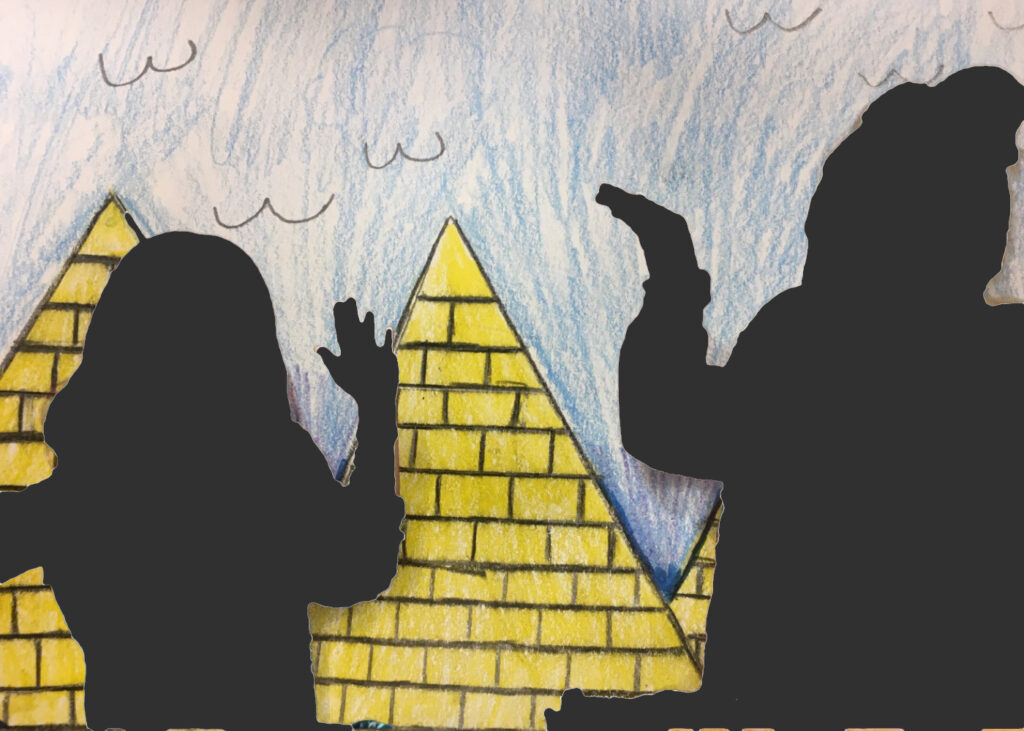Today’s art educators know students love YouTube. As a platform for both entertainment and information, everybody has their favorite “YouTuber” who inspires their slang, fashion, and hobbies. As art educators, we can tap into students’ interest in digital media by incorporating new tools, such as a green screen. The green screen holds a big wow-factor for students but isn’t overly-complicated for teachers. Basically, it is a camera trick that allows a figure to have any background of choice. Anytime you watch a weather forecaster in front of a map or a special effect in a movie, you are witnessing the magic of a green screen.
Students can incorporate this technology into a variety of art projects ranging from art history reports to contemporary photo portraits. There are several phone and tablet applications available, such as Green Screen Wizard, that make green screen input simple and efficient for the classroom. Load the foreground photo, and then input a background image, and you’ve successfully created a new digital photograph using green screen technology!
Here are 3 lessons to include green screen technology in your art room.
Note, we’ve purposely made the students in some of the examples below in silhouette for privacy purposes. In reality, there would be photos of the students where the silhouettes are!
1. Kehinde Wiley Photo Portraits

Kehinde Wiley is known for putting a contemporary spin on traditional portraiture. The artist asks people he meets on city streets to pose in classic positions from old masters paintings. Then he paints the large-scale portraits of the figure in contemporary clothing paired with a vibrant background filled with colors and pattern.
Students can apply this process to create their own contemporary portraits. First, students will photograph one another in front of the green screen. They can look to old masters paintings for ideas on how to pose. From there, they will need to design a unique background. They may pull inspiration from nature, textiles, architecture, graphic design, etc., and create an intricate pattern to fill their composition. Everything that once was green in their photograph will now be replaced with the background image they created.
2. Kelsey Montague And #WhatLiftsYou Wings

Kelsey Montague rose to fame with her murals of large wings on the sides of buildings all over the world. The public is encouraged to interact with her work by posing in front of the mural and using the hashtag #WhatLiftsYou on social media. The social media component asks people to think about what makes them happy or what lifts their spirit.
Students can apply this process using green screen technology rather than painting a large mural. On a piece of paper, each student can draw a pair of wings: bird, angel, bat, dragon, etc. Once the drawing is complete, students will pose in front of the green screen how they might be positioned if they were taking flight. The two images are brought together through the use of green screen technology.
3. Egyptian Pyramid Visual Narratives

Throughout history, people have been communicating stories visually to document their experiences, express themselves, and dream. Looking back to Egyptian pyramid paintings, one can decipher stories of religious beliefs, royalty, and daily life.
After introducing students to some of these historical images of pyramid paintings, ask them to create one of their own. Students can pose with a classmate in front of the green screen to convey one snapshot of a larger story. The pair may be in battle, playing a game, or embarking on an adventure. To complete the artwork, students will need to draw or paint a setting for their picture. The visual narrative will be complete when the background is integrated with the green screen photograph.
Try using green screen technology to further engage students in their artmaking.
Green screen technology is something students are likely familiar with, but may never have experienced directly. Just as with any new material, students become excited and engaged in their learning as they experiment with the process. Try out an idea or two from those mentioned above, and see what your students can do with green screen technology!
What ideas do you have for incorporating green screen technology?
What are some of your favorite apps to use with students in the classroom?
Magazine articles and podcasts are opinions of professional education contributors and do not necessarily represent the position of the Art of Education University (AOEU) or its academic offerings. Contributors use terms in the way they are most often talked about in the scope of their educational experiences.





